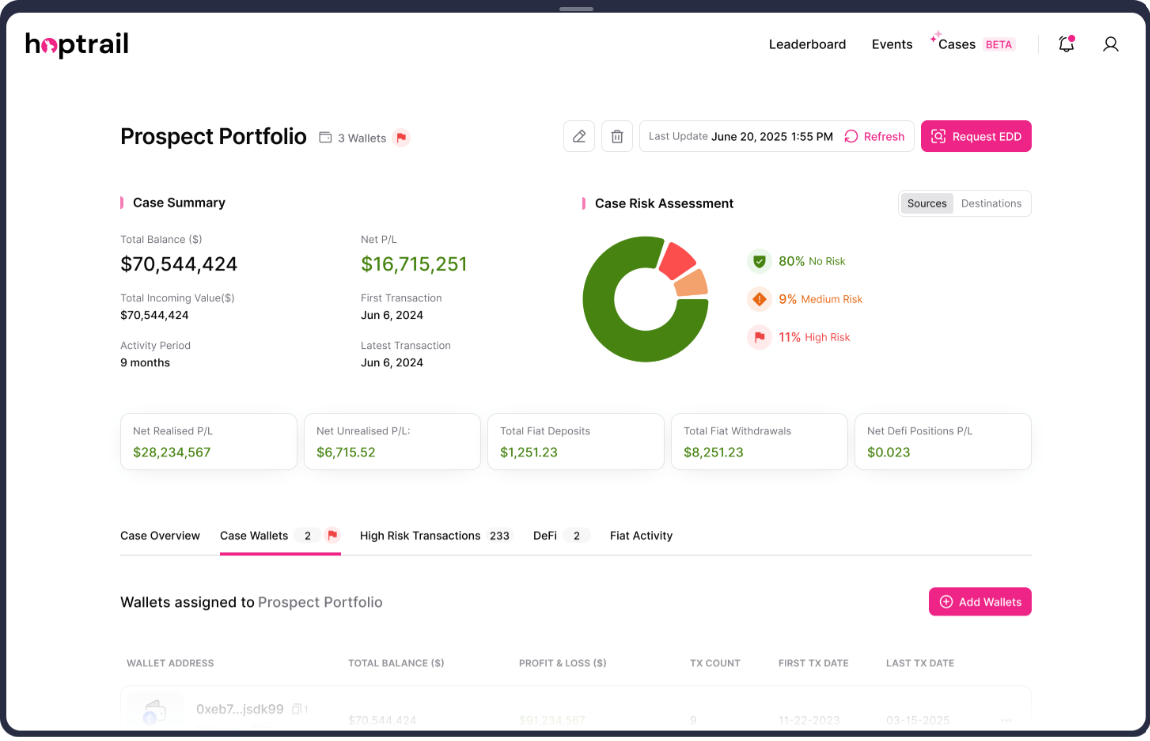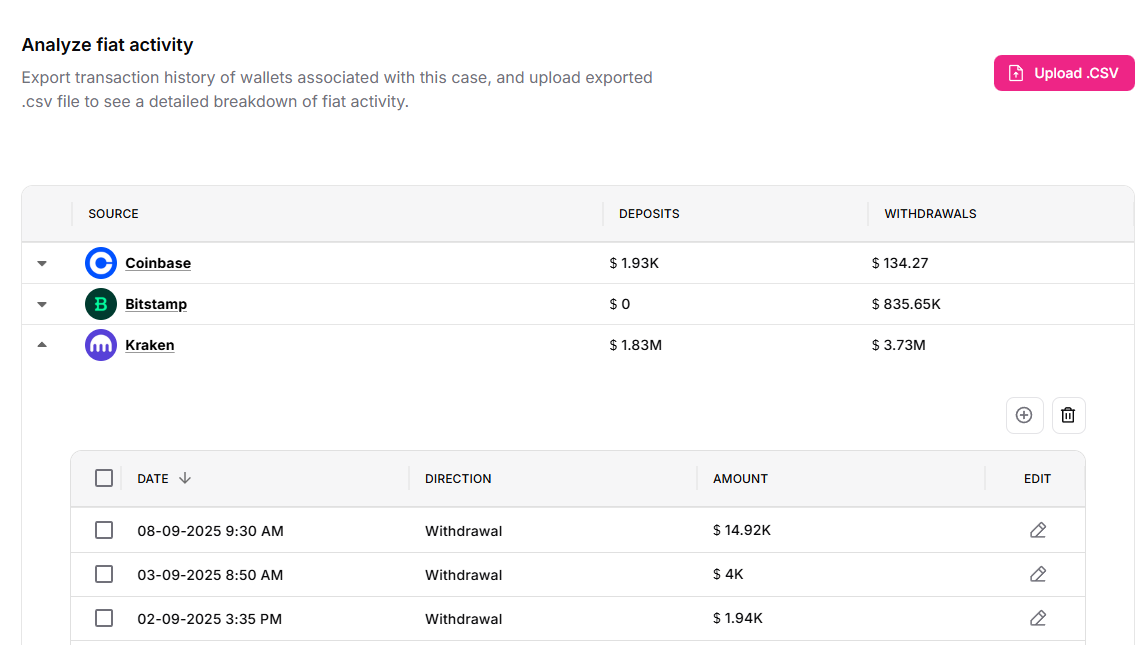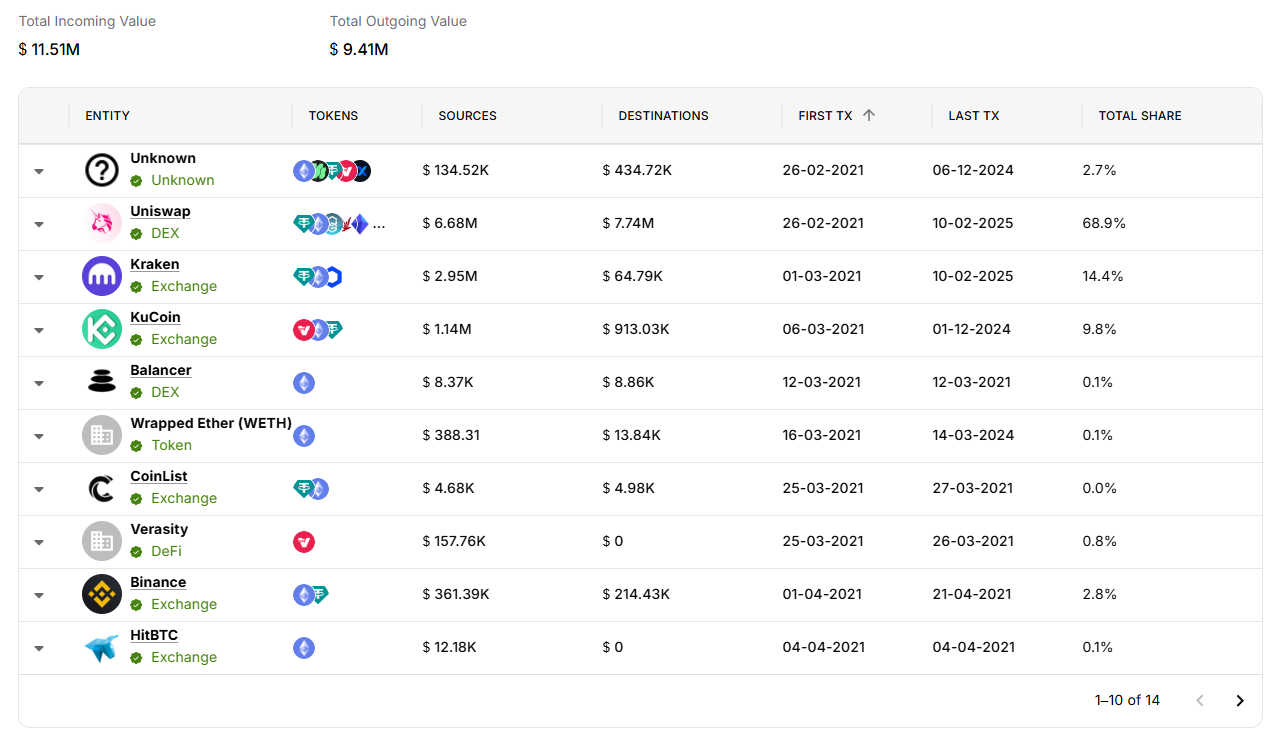Cases: new source of wealth capabilities and upcoming features

Over the last few weeks we’ve shipped a set of meaningful upgrades to Cases. Our updates are designed to keep Cases simple, intuitive, and powerful. Our recent updates give users more proof, more attribution coverage, and more ways to follow funds without slowing down their workflow. Below is a breakdown of what’s new, why it matters, and what we’re building next.
1. Exchange trading and fiat deposits
Cases now supports uploading and viewing exchange statements directly in-platform, letting you capture the full fiat-to-crypto story alongside on-chain activity.
You can now view:
- Fiat deposits
- Fiat withdrawals
- Crypto deposits across all assets
- Crypto withdrawals across all assets

Why this matters
- Users can triangulate on-chain trails against real exchange records without jumping between tools.
- Statements become part of a single auditable case file, strengthening evidential quality and review readiness.
- It accelerates the source of funds assessment.
2. Major upgrade to ETH attribution
We’ve rolled out a major upgrade to our ETH attribution dataset, adding millions more tagged wallets. Under our updated heuristic, we are now capturing in excess of 30,000 newly attributed ETH wallets daily. Hoptrail's tagged wallet dataset is now one of the most complete in the sector.
Why this matters
- More accurate counterparty identification in ETH-heavy cases.
- Higher confidence in risk assessments tied to centralised services.
- Reduced “unknown entity” gaps when tracking flows on-chain.
3. Chronological counterparty tracking
We’ve added activity date ranges for counterparties, so users can now view a prospect’s use of services in chronological order.
Why this matters
- See sequences clearly (e.g., service A → service B → service C), instead of reverse-engineering timing manually.
- Makes behaviour-based risk patterns easier to spot.

4. 'Case Wallets' feature: tracking movements between a prospect’s wallets
A frequent investigative blind spot is movement between wallets controlled by the same prospect. This is especially important for identifying self-funding, internal hopping, or consolidation before cash-out. We have now integrated 'Case Wallets' as an entity, allowing users to see fund movements between a prospect’s own wallets inside the counterparty view.
Why this matters
- Detect internal wallet shuffling and consolidation patterns quickly and reduce 'unknown' counterparty volume share.
- Avoid misclassifying self-movement as counterparty exposure.
- Build a cleaner map of true external risk vs. internal wallet management.

What’s coming next?
Private names for wallets
We've had feedback from our users and we are responding! Soon, users will be able to add private labels to wallets inside a case. This means customers can:
- attach bespoke internal identifiers
- tag wallets according to their own typologies
- keep track of specific prospects’ fund movements with more context
Multi-hop screening
We’re also adding multi-hop functionality to Cases. Soon, users will be able to screen for indirect sources, indirect destinations, and indirect risks…all from a single investigation surface.
Stay tuned for further updates as we build the industry's most complete crypto source of wealth solution.
Want to find out more about Cases? Read more on our website or sign up for free here.

Why we built Cases: A personal note on solving the crypto source of wealth headache

Hoptrail's Crypto Source of Wealth Reports: A Guide

Onboarding Crypto HNWIs: Key Compliance Headaches and How to Solve Them
Subscribe to the Hoptrail newsletter
Sign up with your email address to get the latest insights from our crypto experts.
